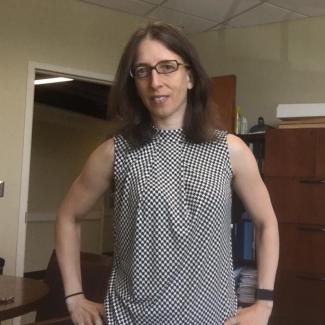Event
Inorganic Chemistry Seminar, Dr. Elizabeth Papish, UA
Inquiries please contact Rosa M. Vargas rvargas@sas.upenn.edu

"The Big Impact of One Small Remote Group for Light Driven Catalytic Carbon Dioxide Reduction and Ruthenium Anticancer Compounds"
-We aim to apply bioinorganic and organometallic chemistry to problems that relate to green chemistry and sustainability. In particular, we are interested in exploring how protic groups and electron donor groups impact catalysis. Within these broad goals, we have pursued reactivity inspired by the need for energy storage, specifically carbon dioxide reduction. Recently, we designed a new pincer ligands using N-heterocyclic carbene (NHC) and pyridinol rings that can change their properties by protonation and deprotonation, rather than lengthy synthesis. The most active transition metal catalysts with these pincers use methoxy groups that balance electron donor ability with stability. This has allowed for the formation of ruthenium and nickel complexes that perform catalytic and light driven carbon dioxide reduction, as shown by our collaborator Delcamp. We have also demonstrated that the OH derivatives can be switched on or off for catalysis with acid concentration. One of our ruthenium complexes is record-setting in terms of reaction rates and selectivity. CO2 reduction is of fundamental importance to the impending global energy crisis, and carbon dioxide reduction (when coupled with water oxidation) can allow for a sustainable method of energy storage in solar fuels. Furthermore, we have studied our hydroxyl substituted bipyridine ligands as a part of ruthenium based anticancer metallo-prodrugs. The ruthenium complexes are light activated and show selective toxicity towards cancer cells (vs. normal cells). With collaborator Kim, we are studying the mode of action of these complexes towards cancer cells.
